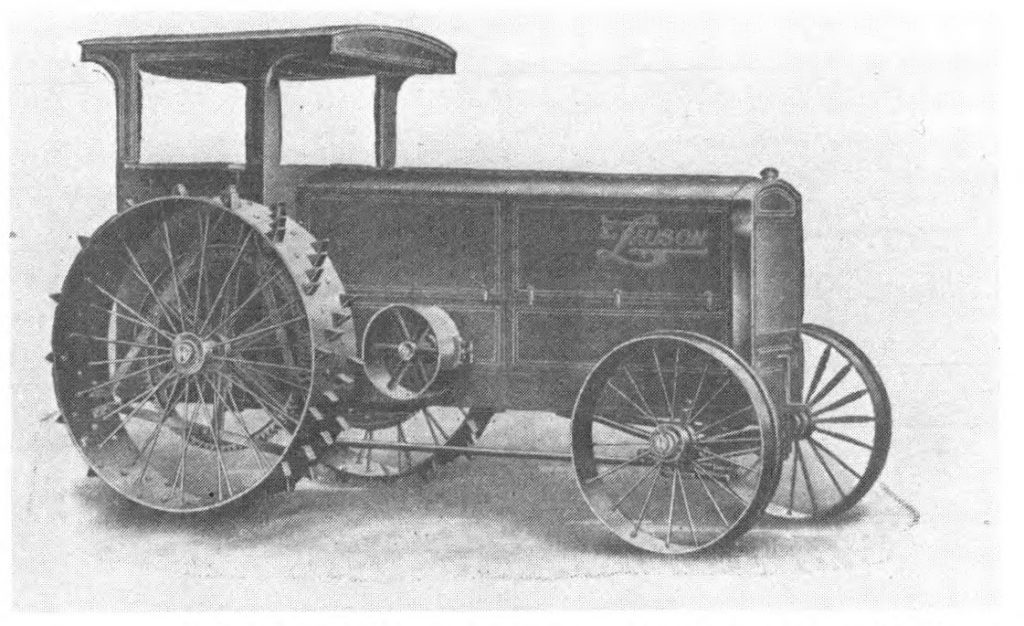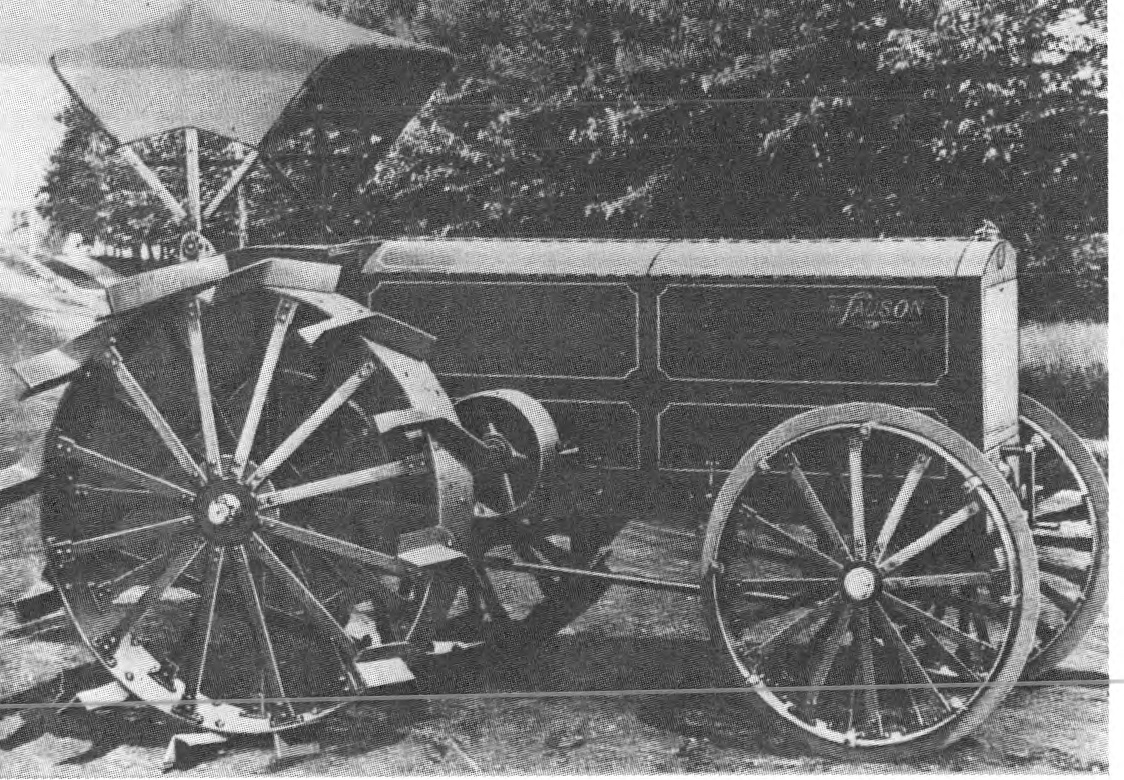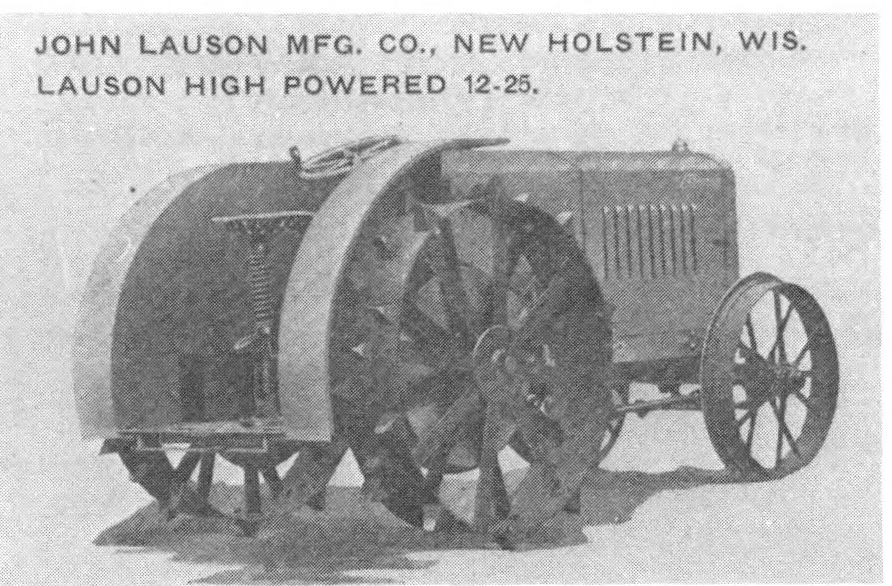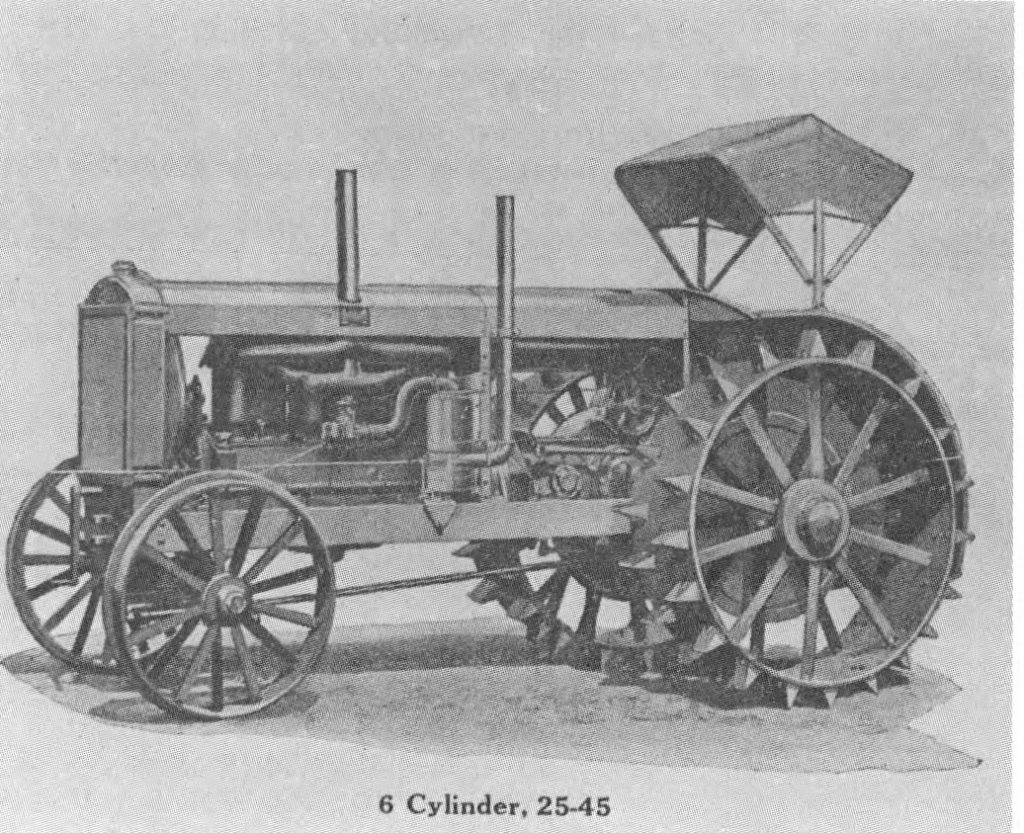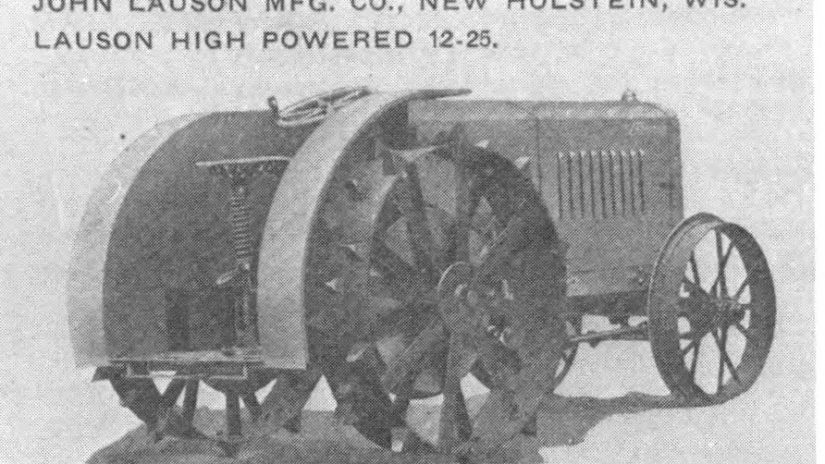Few boys of fourteen years are forced to assume a man’s tasks, but thus it was with John Lauson. His father and four other brothers had come from Germany and settled near New Holstein where they opened a repair shop. Upon his father’s death in 1882, John stepped into the business with his uncles. In 1884, at age 16, John assumed a full partnership with his uncle, George Lauson, and J.H. Optenburg in a new firm and a new shop, specializing in building boilers, tanks, smokestacks, and the like. Traction engines were also repaired. For a time this firm build a complete steam traction engine, the “Uncle Sam”, bit only about 25 were made.
John Lauson bought out Optenburg’s interest in 1891. By now steam boilers and their repair took up the major part of the business.
About 1895, John’s brother, Henry Lauson joined the company. Henry had been working for a gas engine company in Chicago and was very interested in them. The two Lauson brothers, along with H.N. Edens, got busy and built the first Lauson engine in 1898 – a rather crude 4-horsepower outfit, but they liked their success and decided to go further.
In 1904, Lauson came out with their “Frost King” engines. They were immensely popular all over the United States and in many foreign countries.
Just as happened with many gas engine builders, Lauson got into the tractor business. Beginning in 1915, Lauson stayed in the market for many years, facing stiff competiton, but winning out with their quality products. During the last years of production, an alliance with Nichols & Shepard Company bolstered sales. Severe crop failures and the Great Depression forced the company into bankruptcy. It was liquidated on May 15, 1935. After being reorganized, engine production was resumed, and in 1941, Lauson Company was sold to Hart-Cater Company, Peroria, Illinois – they in turn sold the Lauson division to Tecumseh Products Company in 1956.
